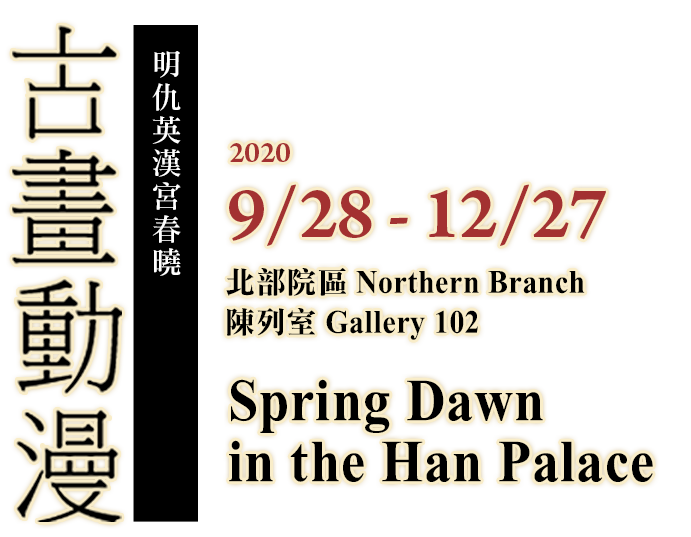Since 2011, the National Palace Museum initiated a series of high-resolution long scroll painting animations. Using the latest technology, several high-resolution 1080 HD projectors seamlessly unfold sceneries from classical long scroll paintings on the wall. The painting animation series reproduces nine popular paintings and calligraphy, including Along the River During Qingming (Qing court artists), Spring Dawn in the Han Palace (Qiu Ying), Imitating Zhao Bosu's Latter Ode on the Red Cliff (Wen Zhengming), Syzygy of the Sun, Moon, and Five Planets (Xu Yang), Departure Herald (Anonymous), Return Clearing (Anonymous) and Activities of the Twelve Lunar Months (Qing court artists), One Hundred Horses (Giuseppe Castligione), The Cold Food Observance (Su Shi), Poem in Seven-character Verse (Huang Tingjian). Inspired by historical material related to the artworks, the animations faithfully present the true spirit of the original paintings and their most attractive parts. A fascinating feature of the long scroll painting is its ability to simultaneously manifest chronological continuity and segmentation. As a result of the unique painting scale and traditional right to left reading direction, painting compositions unfurl accordingly and emphasize horizontal relationships. Oftentimes, scenes occurring at different points in time were depicted on a single scroll.
Introduction
Film Summary
Spring Dawn in the Han Palace

Qiu Ying, Ming dynasty
Spring Dawn in the Han Palace
Handscroll, ink and colors on silk, 30.6 x 574.1 cmThis work takes as its background a palace setting during the Han dynasty on a fine spring dawn; it depicts all sorts of activities in the ladies' quarters. Among the scenes is the famous story of the painter Mao Yanshou doing a portrait of Wang Zhaojun. The composition throughout the handscroll is complex and the brushwork pure yet strong with beautifully elegant colors. Trees and gardens are interspersed among the opulent palace buildings, presenting a magnificent scene as if in a realm of immortals. In addition to groups of beauties, they are also shown engaged in various leisurely activities associated with literati, such as the zither, Go, painting, and calligraphy. Along with scenes of appreciating antiquities and flower arranging, this work represents a spectacular effort by Qiu Ying in terms of historical narrative. At the beginning of the scroll is Xiang Yuanbian's (1525-1590) accession character "lu 慮" from the "Thousand Character Essay," while at the end is a note by Xiang giving the value of the painting as "200 gold." As such, it would appear that Qiu Ying did this masterpiece for Xiang Yuanbian and that it was probably completed in Qiu's late years.
















